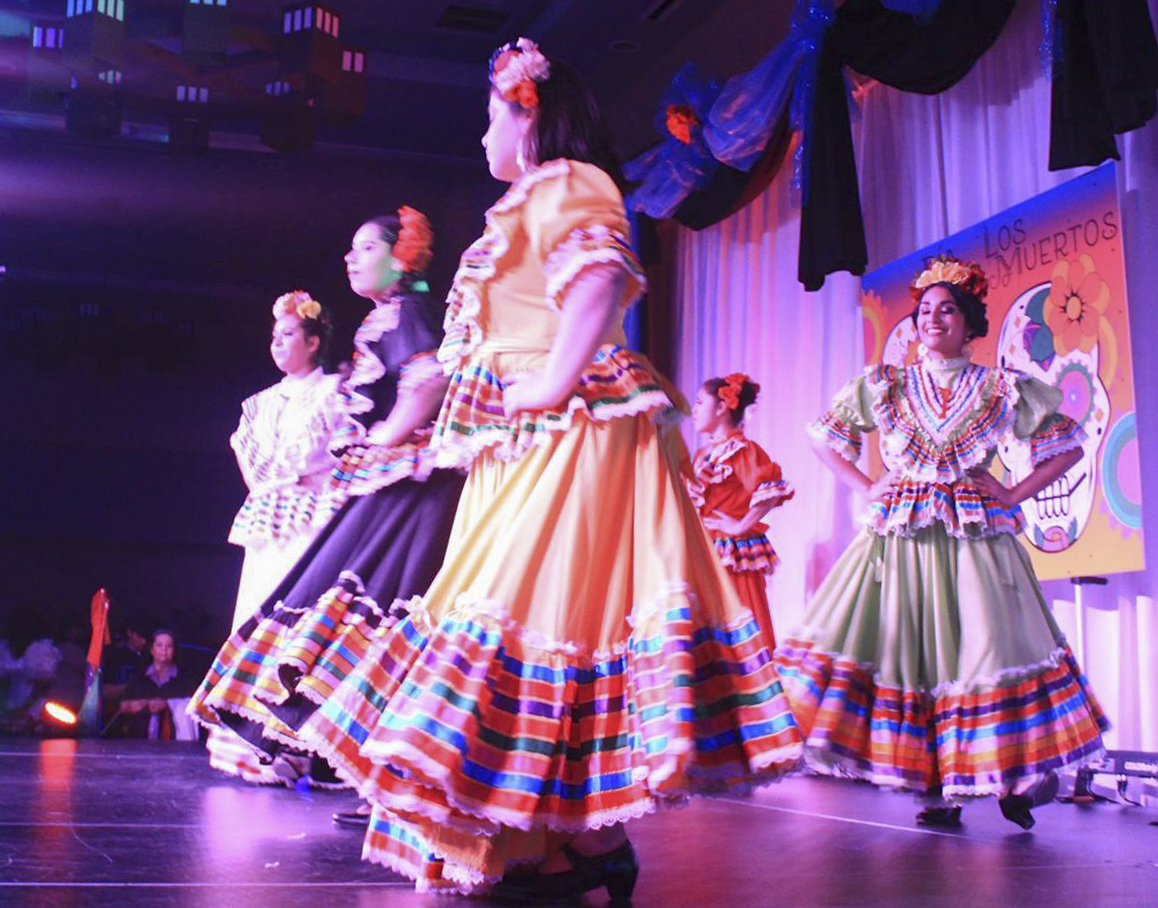Ancient traditions will come back to life
November 2, 2017
The event will start as it does every year, with a traditional Aztec ritual: the blowing of the conch and the asking of permission from the four winds and Mother Earth to begin the celebration.
A procession of colorfully painted skeletons then visit altars to remember and honor the dead, carrying pictures, candles and burning incense. At each of the altars is a group of dancers that move in unison to the beat of a single drum to celebrate the dead honored there.
Día de los Muertos, the Day of the Dead, is an annual festival that originated in central and southern Mexico, the land that used to be the Aztec Empire. According to Aztec culture, the spirits of lost loved ones return for a time, and those who remain honor and celebrate their memories.
“We all have those days where we miss that person so much,” said La’Shawnda Mason, a senior biology major organizing this year’s festivities through the Center for Diversity and Social Justice (CDSJ). “I always feel like [the Day of the Dead] is like, ‘They’re coming to see me!’”
This year’s Day of the Dead Festival at CWU falls on Nov. 3 and will start with a procession from the Barge Hall courtyard to the SURC. In the SURC there will be a final Aztec dance followed by family-friendly events in the Pit and Ballroom.
The sights and sounds of the Day of the Dead celebrations are living embodiments of the history of Mexico and its people. The celebrations are cultural rituals that have been kept alive for generations—predating and enduring Spanish arrival, colonization and Catholicization.
It was the Catholic’s attempt to convert the indigenous population that resulted in tying the celebrations to All Saints’ Day. This proximity on the calendar to Halloween—a holiday not celebrated in Mexico—has led to a mistaken linking of the two in the minds of some.
“They’re just not related,” said Veronica Gomez-Vilchis, a diversity officer with the CDSJ.
Where Halloween has its roots in a Celtic festival marking the end of the harvest—during which offerings were put out to ward off mischievous fairies—and has evolved into a time for all things terrifying, the Day of the Dead has only ever been a time of celebration.
“It’s a positive thing,” Gomez-Vilchis said. “The mourning has already passed.”
The holiday includes many methods of remem
brance, including pictures carried in the procession, brightly decorated cemeteries and the altars, which are layered to represent the journey taken by the dead.
Loved ones decorate the altars with sugar skulls, marigolds, pictures, candles and the dead’s favorite things.
“If grandpa liked cigars, put cigars on there too,” Mason said.

Getting ready for the visiting spirits means including some more practical items in the altar decorations as well.
“You have the favorite foods, the favorite drinks, you have a chair, normally, next to it, because the spirits come and have a seat,” Gomez-Vilchis said, “And you have water, because they’re thirsty: it’s a long journey.”
On campus, the way most people can celebrate the visiting spirits of their dead loved ones is by carrying pictures in the procession.
“As long as anyone’s living in the photo make sure you cover [their faces],” Mason said. “You don’t wanna jinx them!”
At the end of the procession, in the SURC, will be a large altar with a life-sized La Catrina, the skeleton woman who has become an iconic symbol for the Day of the Dead, as well as a sand tapestry.
The altar will be dedicated to those lost in the September earthquake, which hit central Mexico and cost 370 lives. It will be accompanied by the La Catrina, a symbol which was created by Jose Guadalupe Posada more than a century ago.
Posada was a political artist during the Mexican Revolution and created La Catrina as a satire of Mexican natives abandoning their traditions in favor of those of the European aristocracy. It has since been embraced by Mexicans and become synonymous with Day of the Dead celebrations.
Fulgencio Lazo, a Seattle-based artist who was born in the southwestern Mexican state of Oaxaca, will be creating the sand tapestry. He has a distinct style which draws heavily from his cultural background, and he is especially passionate about creating pieces celebrating the Day of the Dead.
In addition to these decorations there will be activities open to the community. Tables will be set up in the ballroom for making sugar skulls, God’s eyes, marigolds and Day of the Dead bags; for face painting, as well as a photo booth.
The festivities in the SURC will be set into motion by one final performance by the Aztec dancers, taught by Roberto Chavez Garcia and Angelena Ramirez Ascencio. They come here to pass on their knowledge and appreciation of Mexican culture and tradition to the next generation, a dance group which includes Gabriela Michel, a freshman pre-nursing major.
“We dance on the Day of the Dead to connect with our ancestors,” Michel said.
Though they practice on linoleum floor under florescent light and a dropped ceiling, they spell out the history of Mexican culture with their feet. Directed in unison by the insistent beat of a single drum, the dancers spin, pace and kick. They form an expanding and contracting circle, steps changing with the drumbeat. As they move, their modern street clothes, sweatpants and sneakers become traditional Aztec garb, transformed by the dance and the music, bringing ancient traditions vibrantly back to life.



